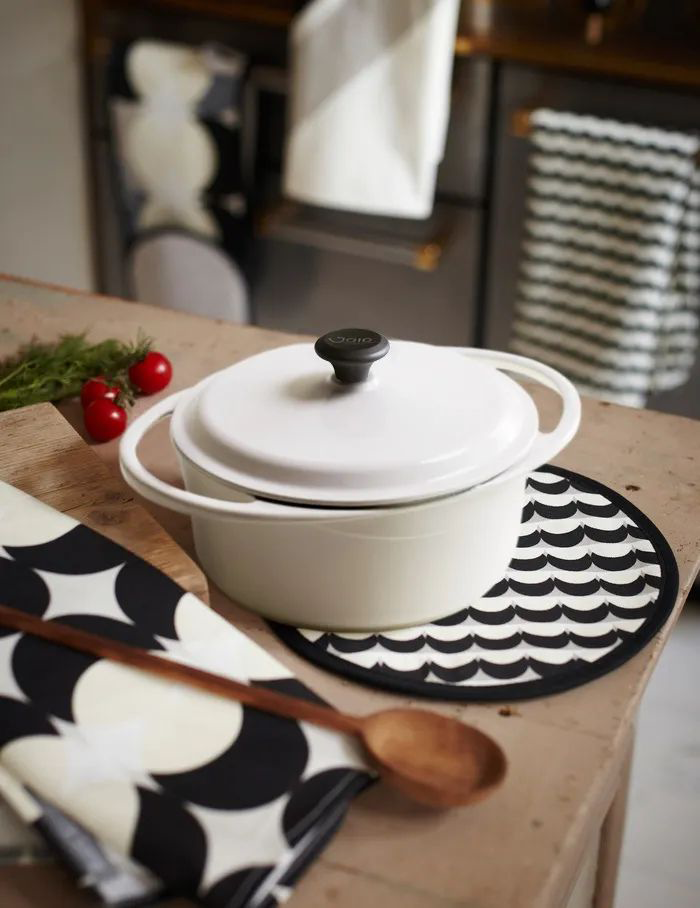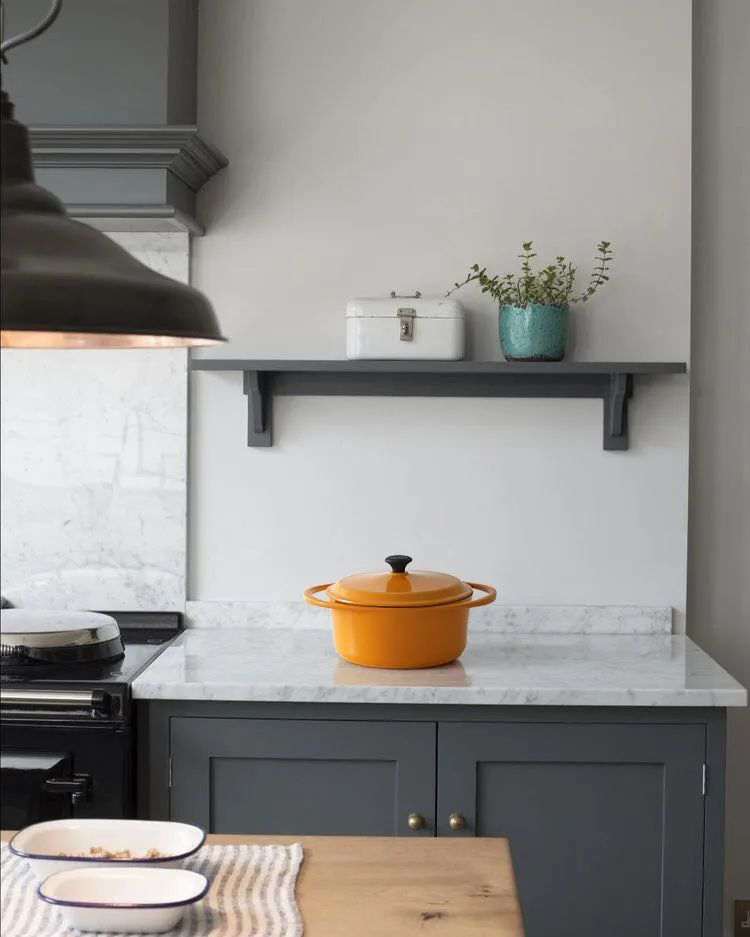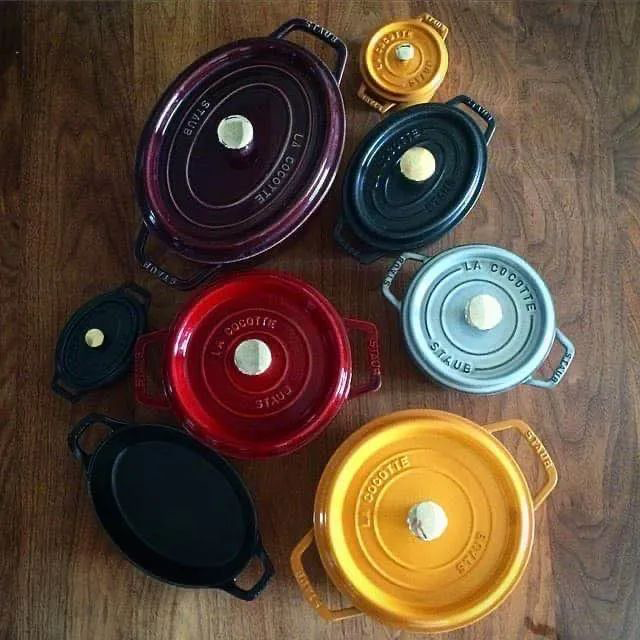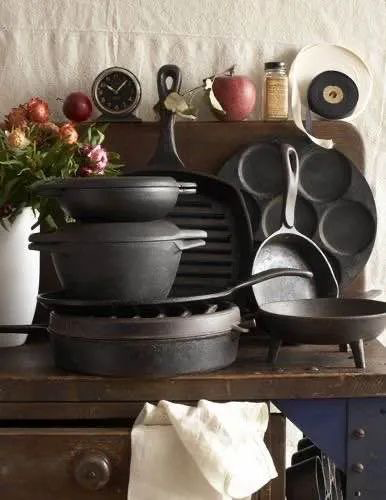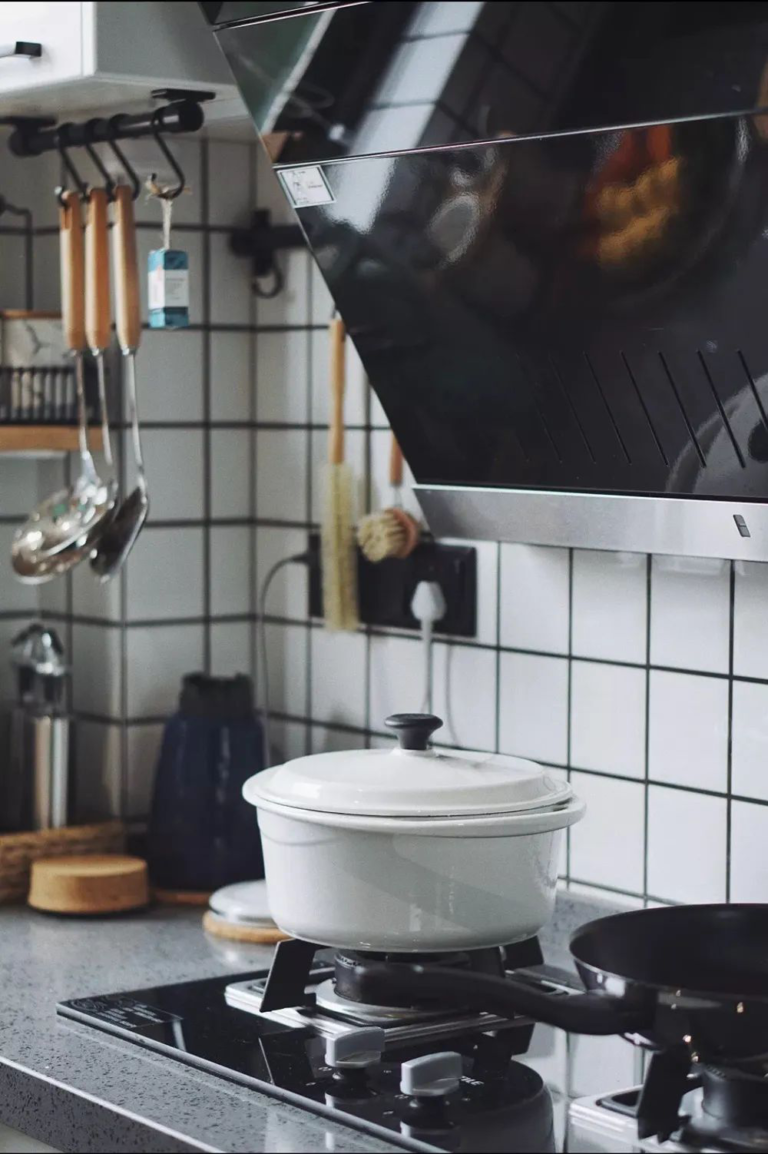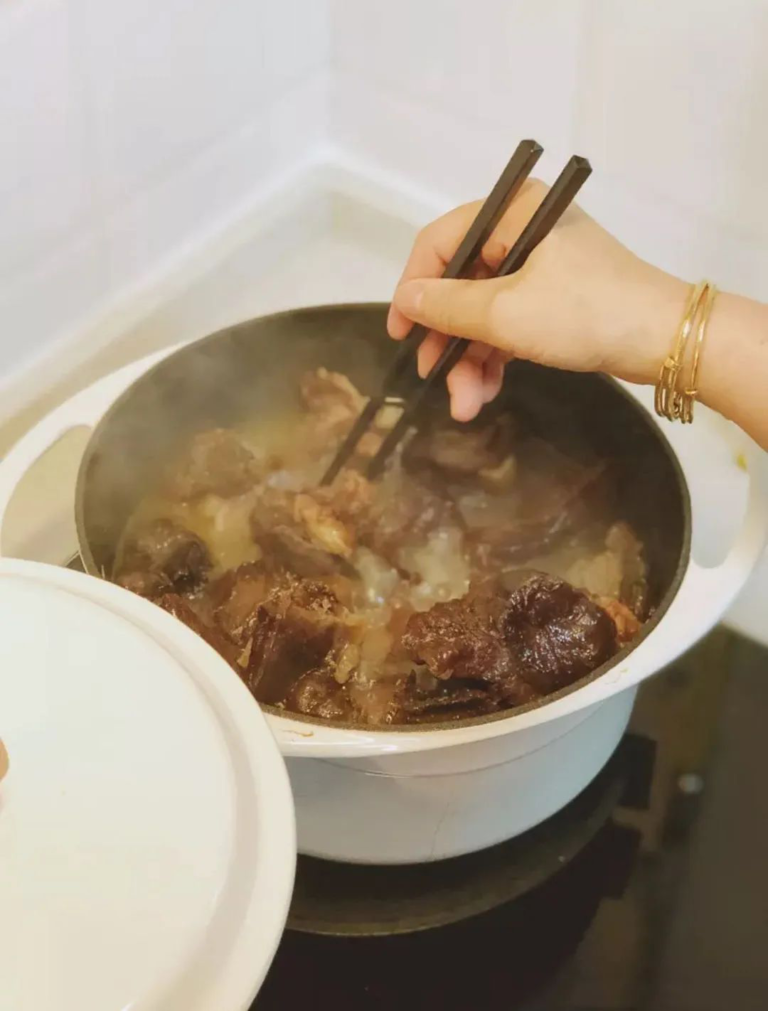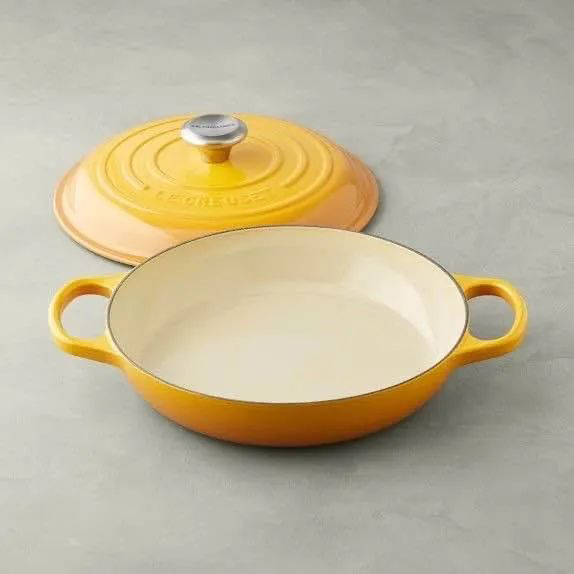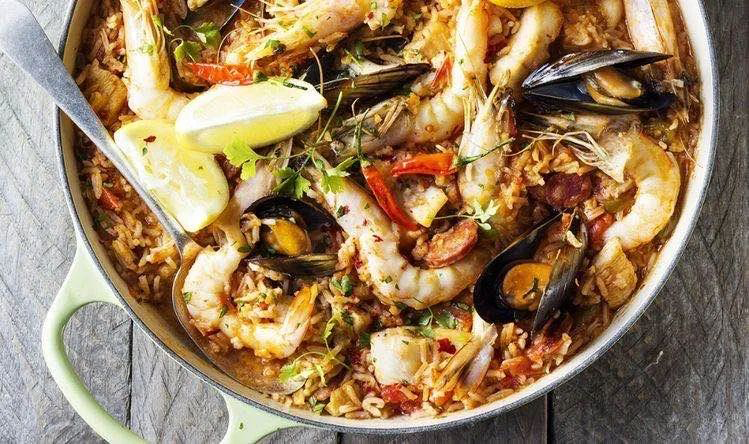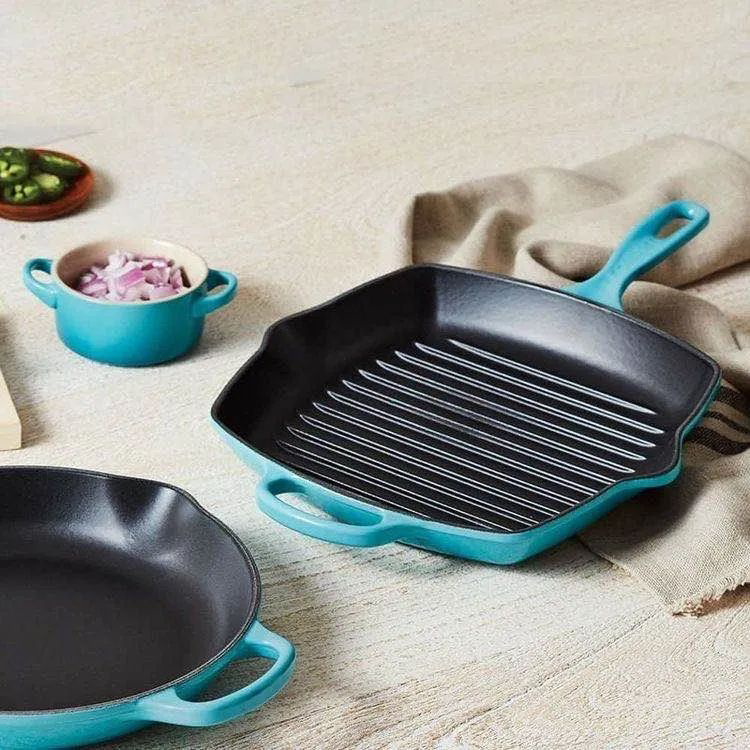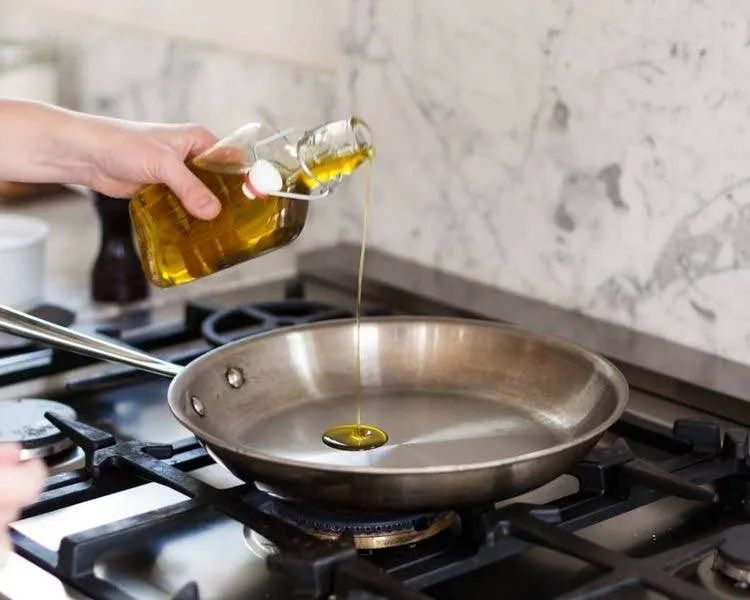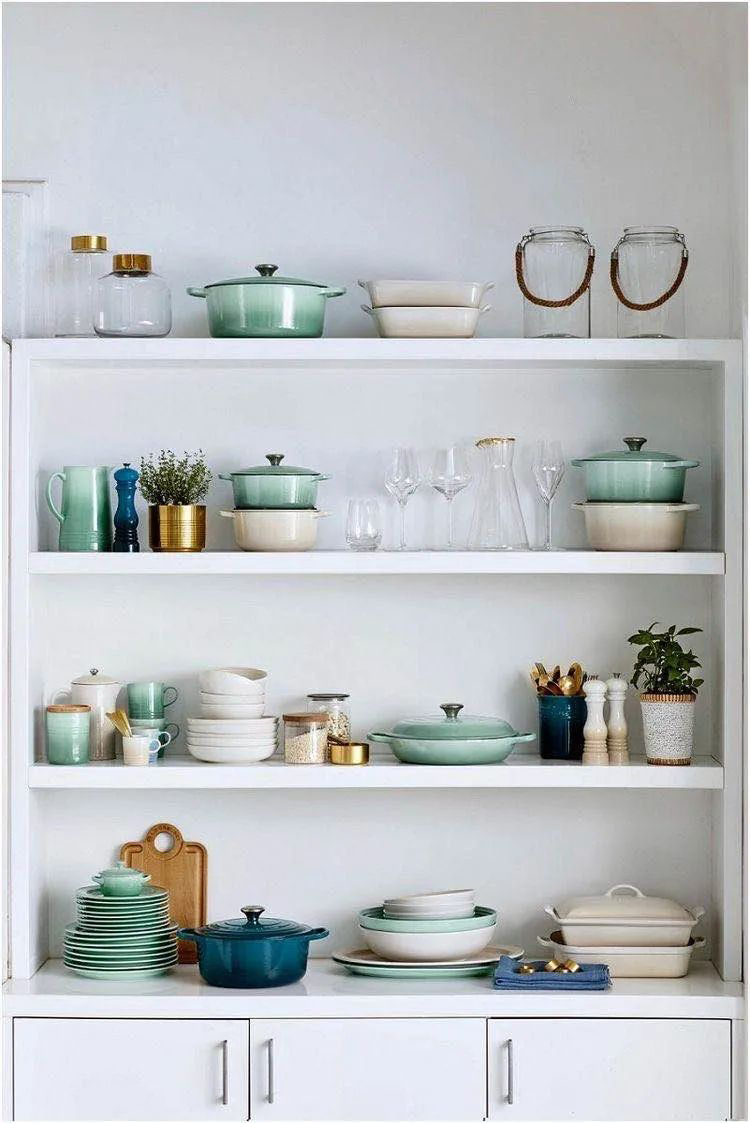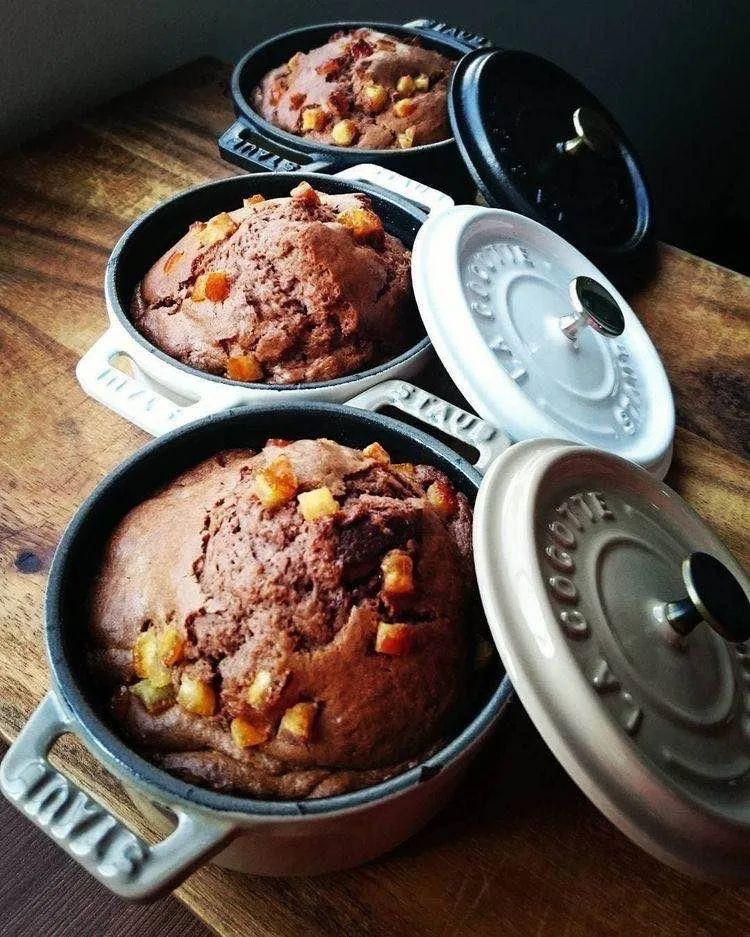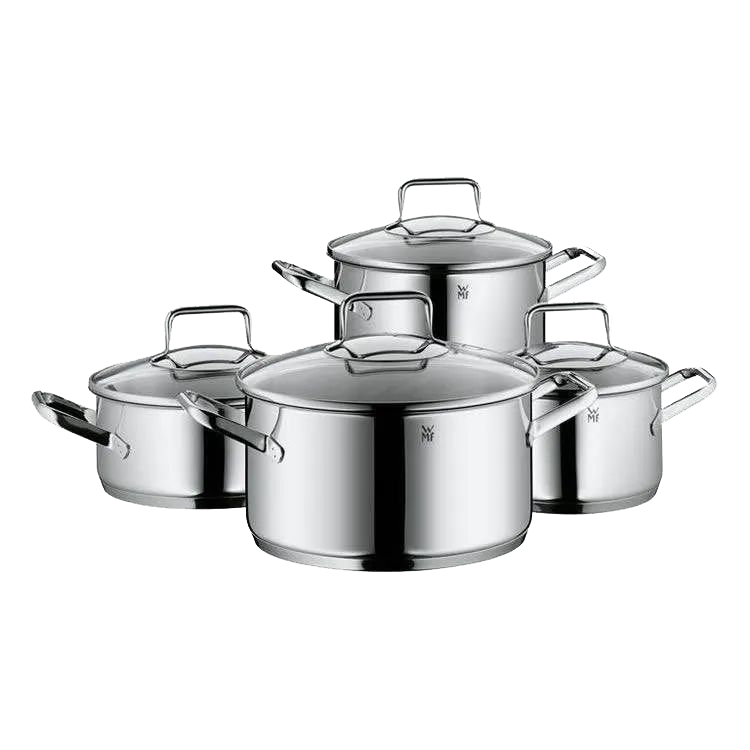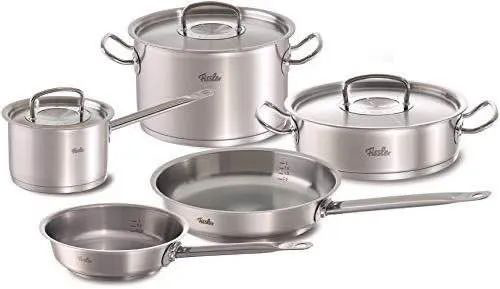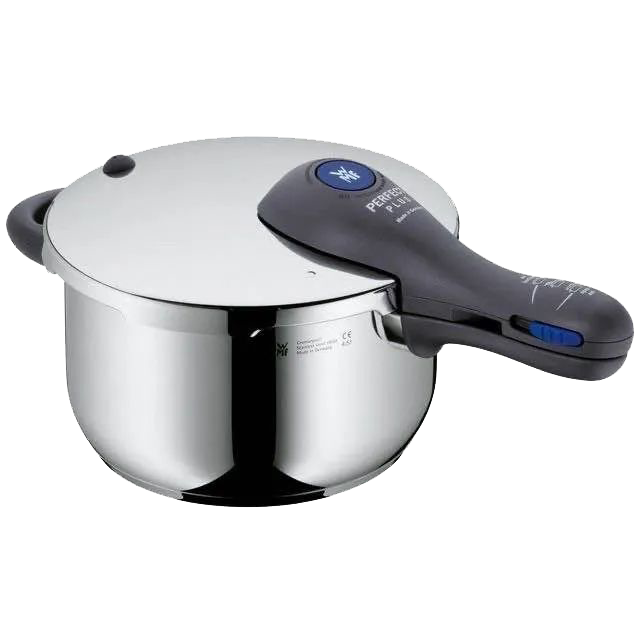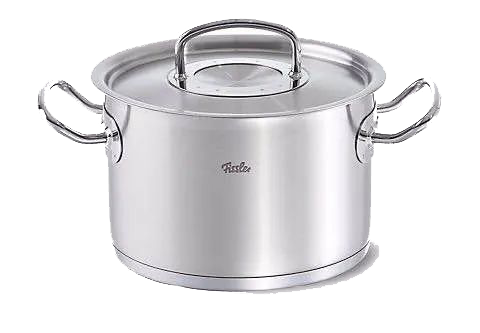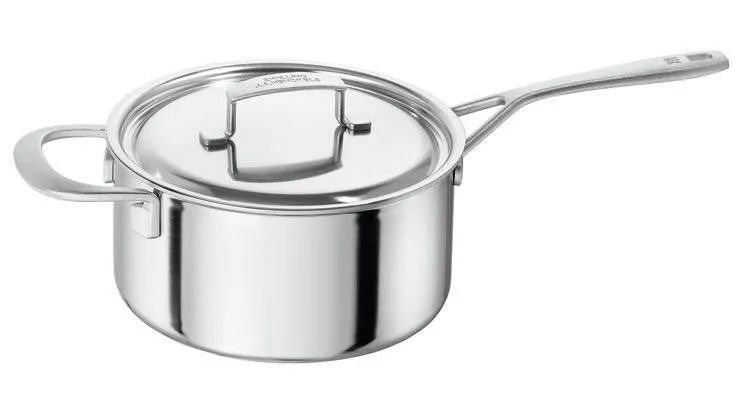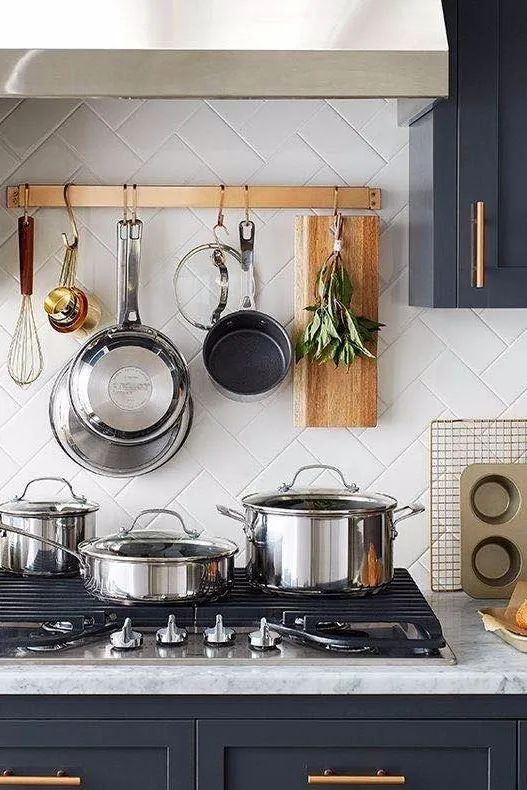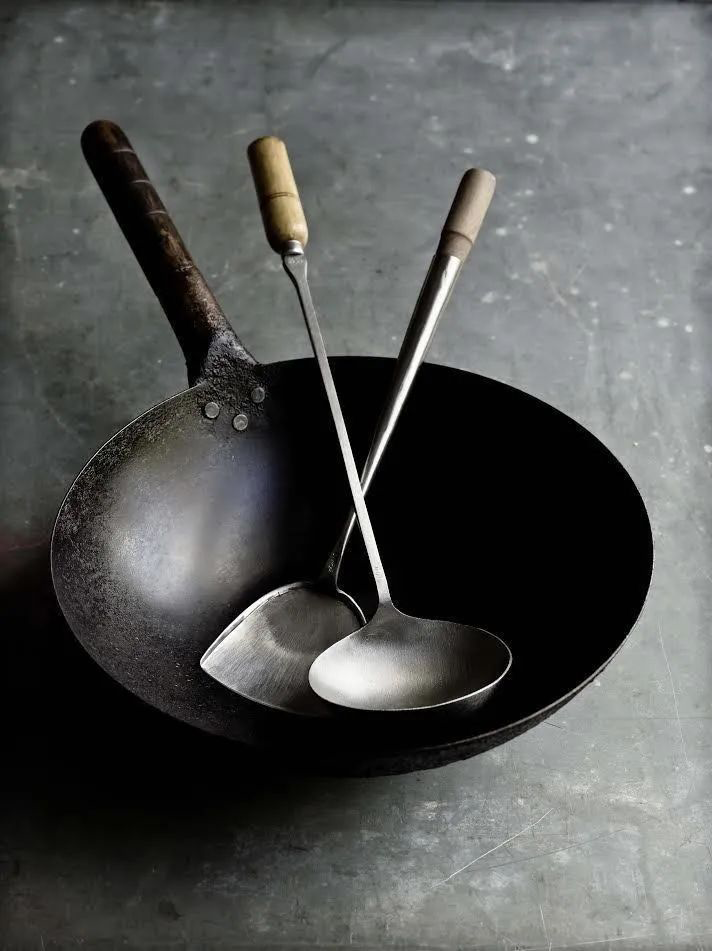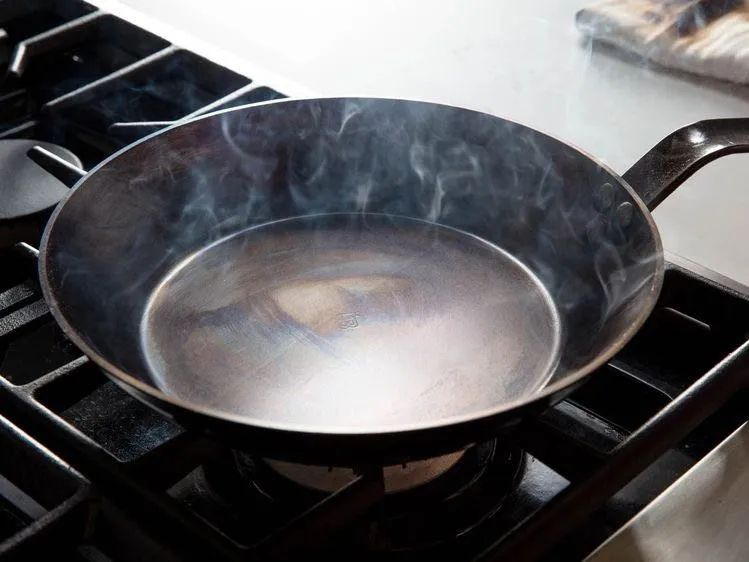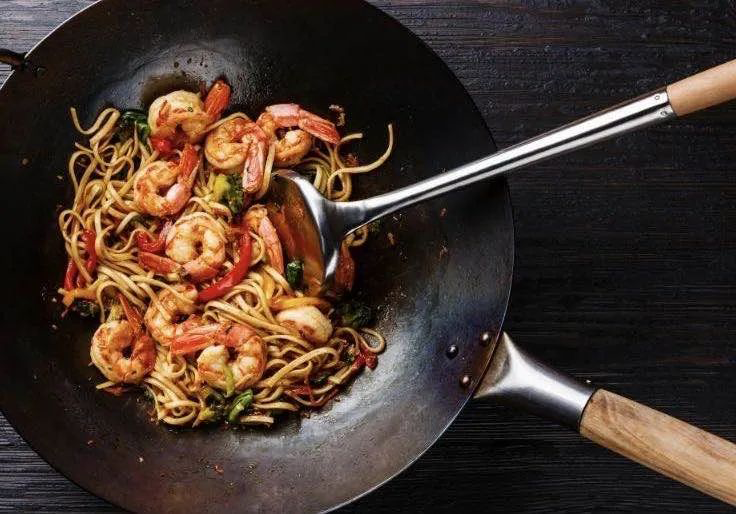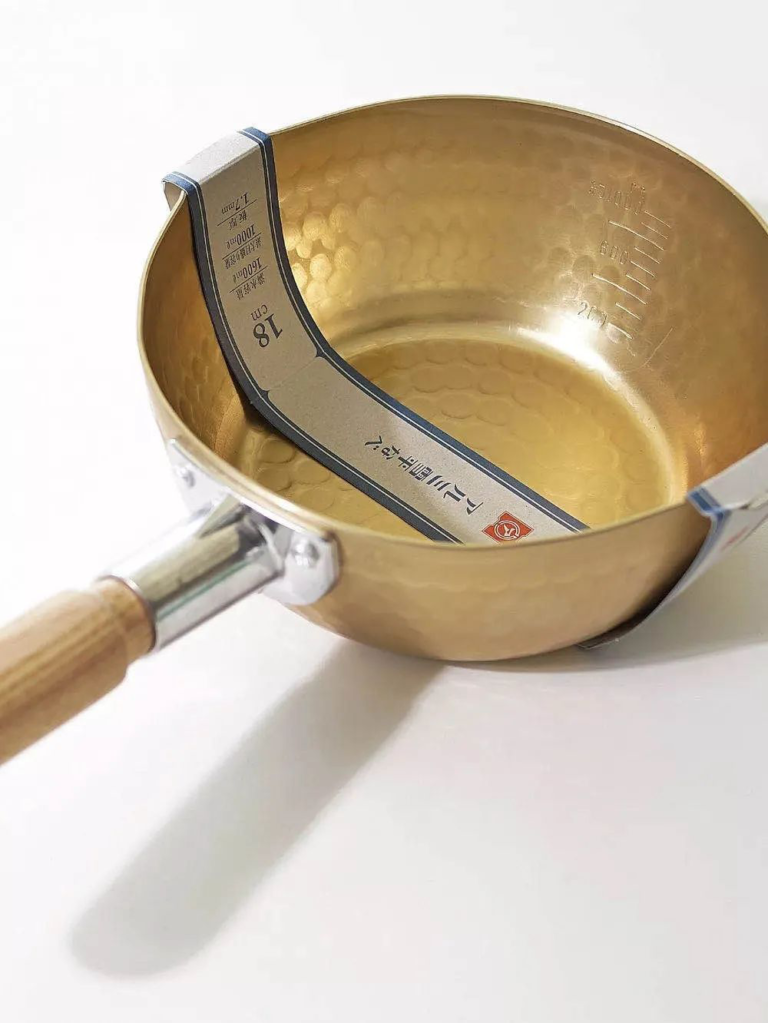How to choose the perfect pot for your kitchen
Who would have thought that due to the COVID-19 pandemic, many people started cooking at home and honing their cooking skills. As a result, kitchenware sales on Amazon suddenly skyrocketed, with cast iron pots and Japanese Kitchoo pots both gaining popularity.
Actually, we have a wide interest in home furnishings, and we want to review everything that is used in the home. As for cookware, cast iron pots were the first area we delved into. Starting from two years ago, we have reviewed many cast iron cookware products, many of which have received high praise on Amazon.
White Cast Iron Pot
Orange Cast Iron Pot
Actually, all pots have some issues to a greater or lesser extent, especially in this era where we have more exposure to the world. Pots used by Europeans and Americans have also entered China, and many pots based on their lifestyle habits may encounter problems when used according to Chinese habits. As someone who loves life, we have bought various pots over the years, mainly from Europe and Japan. Although we are not experts in cookware, we do have some experience using them. This time, we would like to share our experiences in using pots to help those who have suddenly become interested in cooking and want to further improve their cooking and culinary skills.
Basically, if you go to the cookware section of a high-end department store, you’ll see three types of pots: various types of frying pans made of different materials, stainless steel pots, and cast iron pots. Cast iron pots are the most eye-catching because of their colorful appearance.
Introduction to cast iron pots would not be complete without mentioning the several French brands that have been instrumental in popularizing this product over the past century or two.
Our own experience with cast iron pans is that, due to the material, they heat up slowly and dissipate heat slowly, making them very suitable for stewing. During the more than a month at home during the COVID-19 pandemic, at first I used a WMF pressure cooker to cook pork ribs, but later my family complained that the meat was too soft and overcooked, so we switched to using our own cast iron pan.
It takes two to three hours to stew pork ribs or chicken in a cast iron pan, but the taste is really incomparable to the pressure cooker. Based on our experience with cast iron pans, we don’t think there’s much difference in the material between good factories in China, France’s Le Creuset and Staub, and the United States’ Lodge.
The real technical barriers in this field are twofold: first, the quality of the glaze on the inside of the pot, and second, the quality and color of the glaze on the outside of the pot.
Generally, cast iron pots have enamel on both the inside and outside surfaces, and these two enamel surfaces are the technical difficulties in the process of making cast iron pots.
Beautiful colors are not something that everyone can create.
Lodge cast iron cookware is relatively inexpensive in the US because it does not have an enamel coating, it is simply cast iron.
Our experience of evaluating products in recent years has shown that any material, be it glazed or painted, is the most difficult part. For example, the workers responsible for this process are usually the highest-paid workers in the factory. Therefore, for a cast iron pot, the most important thing is the quality of the glaze surface, which should withstand years of use. So you may understand why the Lodge cast iron pot from the United States, as a product of a developed country, can be so cheap. The reason is that it saves the process of glazing both inside and outside, which makes it much less expensive.
The enamel on Le Creuset and Staub pots is certainly durable. Le Creuset’s cast iron pots have two types of enamel on the inside (not the surface): white enamel and black enamel.
White enamel is a bit more delicate than black enamel and cannot be used for stir-frying, as it is prone to staining from heavily colored foods. This may sound alarming, but there’s no need to panic. White enamel pots can still be used for making porridge and lightly flavored soups, and even if they get stained, it won’t affect their function.
On the other hand, Staub pots have black enamel on the inside, so you don’t have to worry as much. You can use them for frying, stir-frying, stewing, and boiling, and they’re less likely to stain.
The exterior of the pot is mainly designed to look good, with a smooth glaze surface without orange peel texture (nowadays, hardly anyone can achieve completely without orange peel, including Le Creuset and Staub). Also, the color is important. Regarding color, Le Creuset is unmatched and no one can compare. If you choose a cast iron pot based on appearance, you can’t go wrong with Le Creuset.
Cast iron pots, like stainless steel pots, come in various functions and models. Below are some recommendations based on my personal experience:
Dutch Oven, which the French call a French Oven, is usually a round pot, although there are also some variations, such as oval, heart-shaped, and pumpkin-shaped pots.
The Dutch Oven from the Le Creuset brand is more popular. The inside of this pot is coated with white enamel, making it suitable for clay pot dishes, stews, and baking. If you only want to buy one Le Creuset pot, I recommend buying a 20cm diameter round pot.
The size of the round pot is as follows: 18-22cm is suitable for about 2-5 people; 22-24cm is suitable for about 4-6 people; consider a 26cm pot for more people; there is also a 16cm round pot suitable for 1-2 people. You can choose the specific size based on the number of people in your household and your lifestyle.
This kind of round pot is more suitable for stewing meat and such.
Braiser
Shallow pans, also known as seafood pans, are often used by foreigners to cook seafood dishes. They are particularly suitable for making Italian risotto, Spanish seafood rice, baked rice, baked noodles, and can also be used for frying. It is recommended to buy a 30cm size, while two people with small appetites can use a 26cm pan. However, one person with a large appetite could finish the whole dish because the pan is indeed shallow and not very capacious.
There are circular ones and also square ones with patterns. Choose according to your own needs.
Because Staub and Le Creuset are two major brands of cast iron cookware, they are often compared and people often ask how to choose between them. Personally, I prefer Staub. As a pot, it is more reliable in terms of appearance, and is a true “handsome pot”. Additionally, the inside of Staub’s pots are coated with black enamel, making them less fragile to use. One pot can be used for frying, stewing, and boiling, and it is not easily stained.
Staub also has a feature where there is a circular protrusion on the inside of the pot lid, which can condense the water vapor produced during stewing, and allow the juices to fall back into the food. It is said that this helps to preserve the original flavor of the food, but I don’t know if it is really effective.
Tips for Using Cast Iron Cookware
Cast iron pots are easy to maintain, and enamel surfaces are smoother and easier to clean.
They can be used on open flames, but with medium to low heat, not high heat.
It is not recommended to use a dishwasher, which means that it is not that you cannot put it in once, but if you use it for a long time, it will damage the enamel surface. It depends on whether you care about this.
Cast iron pots generally have two types of handles, stainless steel and electric wood. Electric wood handles cannot be put in the oven and are not heat resistant. However, when using a cast iron pot to bake things, there is no need to cover it, so there is no need to worry about this.
The trouble with cast iron pots is that they are too heavy. This is really the only reason that hinders me from using cast iron pots.
As I began to stay in apartments in Europe more frequently, I gradually got used to using stainless steel pots. Especially in Germany and Austria, the quality of stainless steel pots is particularly good. As I kept using them, I realized that it’s actually a great choice.
If you don’t need to stir-fry, a flat stainless steel pan is also very useful.
There are actually two schools of European pots. Previously, they were all French pots made of cast iron. The two largest cast iron pot brands in the world, Le Creuset and Staub, are still produced in France (although Staub was acquired by German brand Zwilling J.A. Henckels, the factory is still in France). The other school is from Germany. Because Germany has extremely high levels of steel production, their pots have become stainless steel pots. In fact, because of IKEA’s influence, German pots are gradually becoming popular all over the world.
Cast iron pots are typical French products, with a high aesthetic value and they make food taste great (actually because of their long cooking time).Cast iron pots are typical French products, with a high aesthetic value and they make food taste great (actually because of their long cooking time).
It’s difficult to capture the full flavor and aroma in a photo with a stainless steel pot.
These are the main brands of stainless steel cookware in Germany: WMF, Fissler, and Zwilling. Zwilling’s reputation is not as high as WMF and Fissler because they started doing OEM production in China early on, and the standards of domestically produced products in China are lower than in Germany. However, in recent years, some of WMF and Fissler’s products have also started to be produced by factories in Guangdong, China, and their quality has declined.
WMF likes to make shiny products
Fissler likes to make matte products
Regarding the blame on the declining quality of cookware made in China, it does not necessarily mean that the level of Chinese factories is low. In fact, most Chinese factories, except for the most advanced products in the world, can produce products that are exactly the same as those in Europe, the United States, and Japan. However, some European and Japanese countries do not produce their highest-profit and highest-standard products in China. Those that come to China are often mid-to-low-end products with low prices and low production standards, which ultimately result in the higher quality and more expensive WMF and Fissler German-made products compared to those made in China.
As for stainless steel pots and pans, our opinion is that, except for specific types such as frying pans and stew pots that clearly have advantages in material, most are suitable for stainless steel. Simply put, except for frying and stewing, the requirements for the material of the pot are not particularly high for other operations such as frying, boiling, and steaming.
This is the first high-quality pot I purchased, and it’s also the pot that my family uses most often now (we used it less during the COVID-19 pandemic since we weren’t in a rush, and I started using my cast iron pot to stew food).
This pressure cooker is a star product from WMF.
When pressed for time, in the morning, put the rice and water in the pot and turn on the heat. Then boil eggs, and go wash up. After finishing the routine, breakfast can be ready in about 20 minutes. Cooking porridge only takes about 11-12 minutes, plus 7-8 minutes of release time, 20 minutes is definitely enough to get it done.
When buying a pot, I struggled to choose between WMF and Fissler for a long time. In the end, I chose WMF mainly because I thought it looked cuter.
Pressure Cooker is the flagship product of WMF, made of cromargan 18/10 stainless steel, divided into four levels: Perfect, Perfect Plus, Perfect Pro, and Perfect Ultra, from low to high. Perfect Plus and Perfect Pro are relatively popular. It can be purchased online for less than $200, and can also be purchased at discounted prices during shopping mall promotions. I bought the Perfect Plus with a capacity of 4.5L, which is generally sufficient for a family of three, and can also accommodate two more adults.
Don’t think that a pressure cooker can only be used to cook porridge, stew meat, or steam vegetables. Cooking rice using a non-perforated steamer basket is also possible, and it can even handle light stir-frying. Good quality stainless steel pots can be used for pre-cooking and continuing the cooking process.
However, strictly speaking, a pressure cooker doesn’t necessarily make food taste better than various specialized pots. For example, slow cooking over low heat is better for making porridge, and a cast iron pot is better for stewing meat. The advantage of a pressure cooker is that it saves time.
It’s worth mentioning the quality of the materials and surface of this pot. Every time I wash it, I can feel the texture and surface of the pot and I believe it will last for decades without any problems. The surface is shiny and although it may be prone to scratches, they do not affect the brightness of the surface. After wiping it clean, it still looks as good as new. Although the handle and rubber ring may wear out over time and need to be replaced, the pot itself can be passed down through generations.
Every Chinese household must have a steamer, which is not a common concept in foreign countries. They have pots that are similar in shape to Chinese steamers called soup pots, which are mainly used for making soup and stews. In the true sense, steamers in China are either rectangular or the currently popular embedded steaming oven. Therefore, it is not easy to choose a foreign brand pot to use as a steamer.
After comparing with WMF, I ultimately decided on Fissler because their Original Profi Collection series is matte and said to be more scratch-resistant than the glossy finish, which has proven to be true. However, I personally prefer the glossy shine.
Fissler’s pot bottom has sunflower indentations, which is said to heat up faster. In my experience, the heating is not necessarily faster, but the insulation performance is good, and it does not lose much moisture.
Fissler Soup Pot
I bought the 24cm caliber one, which can stew a whole chicken or duck without any problem. When using it to steam crabs, the taste is obviously better than other pots. However, as a steamer, first, its size is a bit small and cannot steam too many things. 24cm is basically the largest size for a soup pot. Second, the original steaming tray is not cheap and almost the same price as the pot. Therefore, it is not recommended to use it as a steamer.
After introducing WMF and Fissler, there is always the question of which one to buy. Of course, Zwilling J.A. Henckels will also be included in the decision. My suggestion is to first choose the one made in Germany, and then buy whichever one looks good or has a lower discount. I don’t think there is any substantial difference between them.
Actually, in our work, we have been researching why ordinary stainless steel pots made in China have a noticeably lower quality than those made in Germany.
The preliminary conclusion is that there are differences in materials and surface technology. For example, WMF’s 18/10 stainless steel is directly called 304 stainless steel in China, but in fact, the nickel content of 304 stainless steel is lower than that of 18/10 stainless steel, which is a distinction in materials.
Of course, German pots generally use sufficient materials, are heavy, and have thick bottoms. But in Chinese factories, this is not a problem as long as you are willing to spend money and the factory uses sufficient materials. The reason why Chinese pots are thin is simply because of cost. The label of poor quality due to low-priced materials used in Chinese manufacturing will gradually fade away over time.
Refers to pots with a caliber of 16-18cm and a long handle, generally known as milk pots, but not necessarily used only for heating milk. This pot has many uses, such as blanching water, boiling eggs, cooking noodles, and various types of cooking that require heating but do not require a large pot.
The Snowpan and enamel pot we previously reviewed are pots of this shape and purpose, but stainless steel material is more durable and resistant to impact. If you want to keep it for a long time, it is recommended to buy one. Anyway, having two or three of these pots is not too many, as they can all be used.
Recommendations for using stainless steel pots
I am reluctant to use my stainless steel pots, including some enamel pots, on an open flame because the gas often burns the bottom and walls of the pot yellow or black. In recent years, salespeople used to say this yellowing is irreversible, but now I often hear that certain detergents can clean it off. I haven’t tried it yet, so I don’t know if it really works. If you care about the appearance of your pots, I suggest using them on an electric stove as much as possible, so the bottom of the pot will remain like new.
Small and medium heat is recommended, especially when using a gas stove, as high heat can damage the pot.
Try to clean the oil stains and dirt as thoroughly as possible every time you clean the pot. If not cleaned in time, it is easy to turn black after reheating, and it will be difficult to clean after a long time. If not using a dishwasher, after washing, use a dry cloth to wipe off the water stains before storing it away, as water spots also affect the appearance.
If the bottom of a stainless steel pot accumulates limescale, it can be cleaned by soaking and heating it in white vinegar or using other limescale cleaning agents.
It does take some time and effort to clean stainless steel pots and make them shine like new. Sometimes it feels like you’ve hired an ancestor to come home and take care of it. But every time you see the pots shining like new after cleaning, as beautiful as in the picture, your mood will be greatly improved.
Chinese people may not have any woks, but they cannot be without one. Honestly, so far, we believe that the most suitable one for Chinese people is the pure iron wok from Guangdong, represented by Chan Chi Kee. If it is produced by a good factory, this type of wok should be hand-forged (I have seen it in the factory, actually done by a combination of manual labor and machinery).
As for ordinary frying pans, Guangdong frying pans are good enough. When you buy them online, you should pay attention to several points. Firstly, whether they are hand-forged or not. Secondly, whether they are thick enough (1.5mm thickness is appropriate, and many pans are not thick enough, suspected of cutting corners). Thirdly, during the factory manufacturing process, the pan will turn black due to the high temperature, but many pans online are blue, indicating that the temperature is not high enough.
Most of our products are inspired by Europe, but when it comes to frying pans, they are clearly not available in Europe. The only similar option would be Japan. We were interested in a Japanese brand with a perfect appearance (great presentation) and excellent craftsmanship.
Additionally, in terms of promotion, the pan was made from materials provided by Nippon Steel, and had a unique anti-rust process. As we have business relationships in Japan, we contacted the manufacturer.
However, we soon stopped working with the factory because we found that the Japanese-made frying pans looked good but were not as beautiful to use. The pan body was too thin (not forged, but stamped), which made it very smoky and the dish cooked did not have the traditional wok aroma.
We remembered that the Guangdong frying pans were so cheap because they were rejected due to their poor appearance. In contrast, this frying pan had a good appearance but was not good to use, and was also expensive, which left us at a loss.
Japanese iron pots are generally well-crafted.
Thinner iron pots are more likely to smoke, and Chinese stir-fry requires a round-bottomed pot, which is not in line with the habits of using flat-bottomed pots for Chinese people.
Wok is probably the most difficult type of pan to master because people have too many demands. They want it to be non-stick, produce less smoke, cook food deliciously with wok aroma, and be lightweight…
It can be safely said that currently no pan can fulfill all these requirements. If there is one, its sales will be amazing. Therefore, friends who want a good wok must think carefully about their needs and make trade-offs. For example, if you want less smoke, the best way is to heat it up slowly. However, heating it up slowly means the food will not be fully cooked and cannot produce wok aroma. Moreover, if you heat it up slowly, the pan must be thick, and if the pan is thick, it cannot be lightweight.
Until now, we believe that a good stir-fry pan should be made of iron or at least stainless steel. Other materials are not suitable.
As for the application of some technologies on frying pans, such as coatings or the use of materials other than iron and steel, we instinctively avoid them because they are indeed prone to problems. It’s not to say that those pans are necessarily bad, but as an ordinary consumer, it’s difficult to discern the issues.
We will also continue to search for better frying pans and believe that we can always find one that imparts a good flavor to the dishes, is not too heavy, and has less smoke and sticking.
Compared with frying pans, stainless steel pots, and cast iron pots, the Yukihira pan is just a small category and not a main character at home. However, because of its simplicity, ease of use, ability to easily boil water, cook noodles, and its light weight and quick heating, it is very popular in Japan.
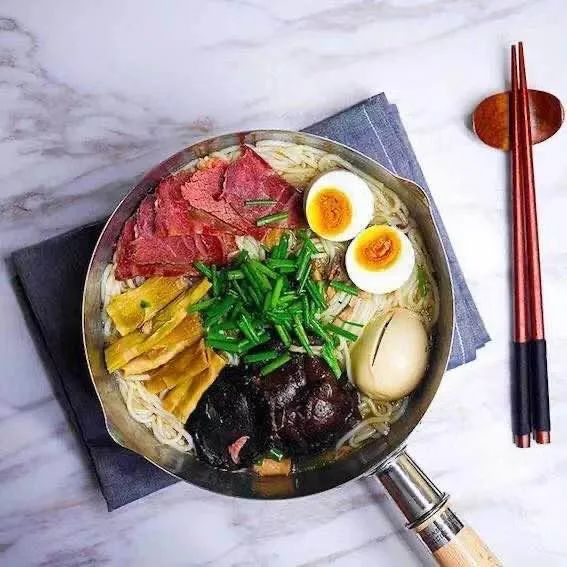
Japanese Kitamaebune Pot
Benefits of YUKIHIRA Pan:
Lightweight, it can become the lightest pot in the house.
Fast heat conduction, as is the characteristic of aluminum, it boils water and cooks noodles quickly.
The surface has a hammer pattern, so it is not easy to spill over, of course, this is not absolute, can you avoid spilling if you fill a large pot to the brim?
It is worth noting that the handles of the Xueping pot are made of wood, which is easy to burn black when exposed to open flames. Therefore, it is recommended to use medium or low heat.
In fact, the essence of the saucepan is its lightweight feature. The reason why Japanese people insist on using aluminum is also for its lightweight feature. If stainless steel is used instead, it is better to make a thick pot according to German standards. In fact, the price will not be much more expensive than the saucepan of the same size, but that pot can be used for decades, while the saucepan is a consumable item that needs to be replaced every one or two years.
Many people realize the importance of life. Good life requires good tools, and this is the purpose of our article on recommending pots.
However, after reading it, you may understand that the selection of a pot actually depends on your attitude towards life. If you have enough time, you may choose a cast iron pot because cooking with it takes longer and the food tastes better. If you are super busy every day, it is best to buy a pressure cooker so that you can cook food quickly. Although it may not be as delicious, it is still okay. Aluminum snow flat pots are not expensive and lightweight, but they cannot be used for many years. And if you want to buy a wok that is less smoky, non-stick, lightweight, and safe to cook with, trust me, such a pot does not exist.
Essentially, choosing a pot is a reflection of your life. What you need to understand is that nothing is perfect in life, and every choice you make means that you have to give up something to get something.
